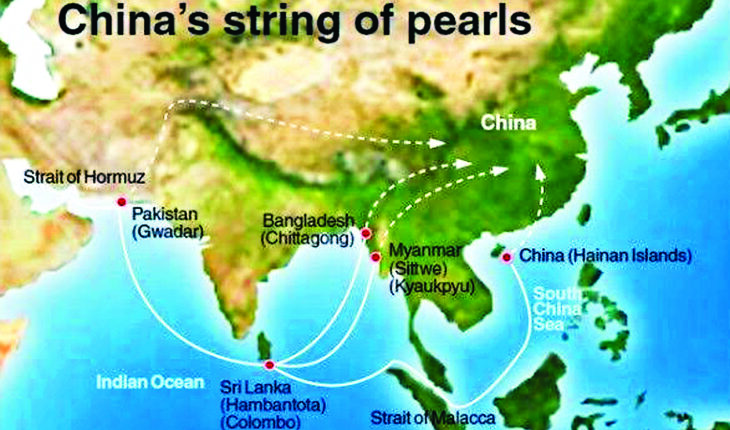Anurima explores ways that may help India counterbalance China in the Indian Ocean
Chinese foreign minister Wang Yi recently visited Sri Lanka to mark the completion of 65 years of diplomatic ties between the two countries. On the occasion, he proposed a forum of Indian Ocean Island countries sharing similar experiences and common needs. It had a striking resemblance to the Security and Growth for All in the Region (SAGAR) initiative launched by India in 2015.
Through SAGAR, India seeks to deepen economic and security cooperation with its maritime neighbors and assist in building their maritime security capabilities. For this, India would cooperate on the exchange of information, coastal surveillance, the building of infrastructure and strengthening their capabilities.
The proposal may intensify the maritime rivalry between India and China in the Indian Ocean region.
Indian Ocean: no more a “Zone of Peace”
On December 16, 1971, Sri Lanka successfully had the United Nations General Assembly declare the Indian ocean, together with the air space and ocean floor, as a ‘zone of peace’ for all time. A ‘zone of peace’ is a soft law adopted by the United Nations general assembly. It is a geographical region of the world in which groups of States have maintained peaceful relations among themselves. The law was adopted to prevent western powers from flexing muscles into the Indian Ocean region. However, the concept remained illusionary. A glaring example of it is Diego Garcia military base of USA in Indian Ocean. To avert China from the Indian Ocean, India has continuously supported the idea of a “zone of peace” that apparently proved futile. India cannot counterbalance China if it keeps living the illusion that the Indian ocean is a zone of peace. Without Quadrilateral Security Dialogue (QSD or QUAD), which is gradually turning into military alliance and AUKUS (a trilateral security pact between Australia, the United Kingdom and the United States), India cannot counterbalance China in the Indian Ocean as the Dragon already has a strong presence there.
China’s advances in the Indian Ocean region
China has expanded its trade route in the Indian Ocean region decently well. For example, China-Myanmar economic corridor starts from Kunming province of China to Kyaukphyu port in Myanmar. From there, it enters into the Indian Ocean region reaching to Hambantota Port in Sri Lanka and then to Gwadar Port in Pakistan, encircling India in the maritime. Hambantota and Gwadar are well-established Chinese-sponsored potential Naval bases in the Indian Ocean region. This is how China is reaching out to the Indian ocean countries and strengthening its hold in the Indian Ocean region. India-sponsored Chabahar Port in Iran is to balance out the Chinese-sponsored Gwadar Port in Pakistan. However, a $400 billion deal between Tehran and Beijing in March 2021 is adding more pearls to the “string of pearls” of China. Moreover, the constant surveillance by Chinese satellite networks on the Indian Ocean raises concerns for India.
Changing priorities in a realist world order
In the modern world, small powers seek economic advantages. Evidently, countries like Sri Lanka, Bangladesh, and other African countries are supporting Belt and Road Initiatives (BRI) openly. Powers like India and China seek regional hegemony. China seeks hegemony through money and debt trap is its modus operandi. Keil’s Institute of World Economy has estimated that the world owed $5 trillion to China in 2017. Beijing’s economic advantages and priorities of small power fit in like a couple made for each other.
On the contrary, India seeks hegemony through soft power, which is impressive but not compatible with the rising realist world order.Way forward
India needs to hit the nail at the BRI lacunae as the initiative is well known for its unaccountability. Through SAGAR, India must promote an “openness” that the BRI doesn’t offer. Offering a better alternative will help India attract small powers and get their cooperation in the Indian Ocean region. Realizing the utility of QUAD in space technology advancement is crucial for India to balance out China’s decade-ahead space technology. However, the Trincomalee Port in Sri Lanka is an optimistic step towards the realization of leadership by India in the Indian Ocean.
Anurima is a student of Masters in International Relations. Views are personal.





